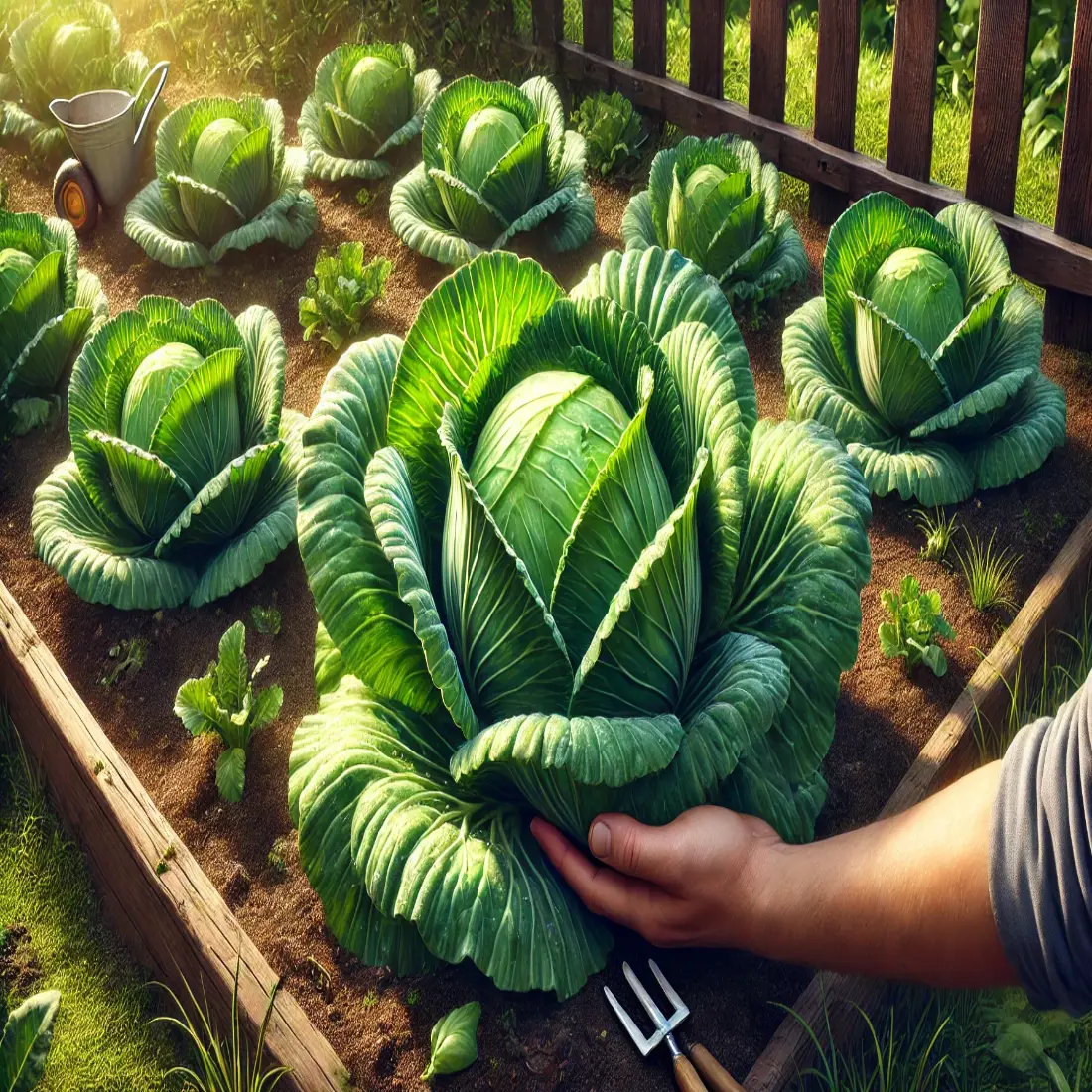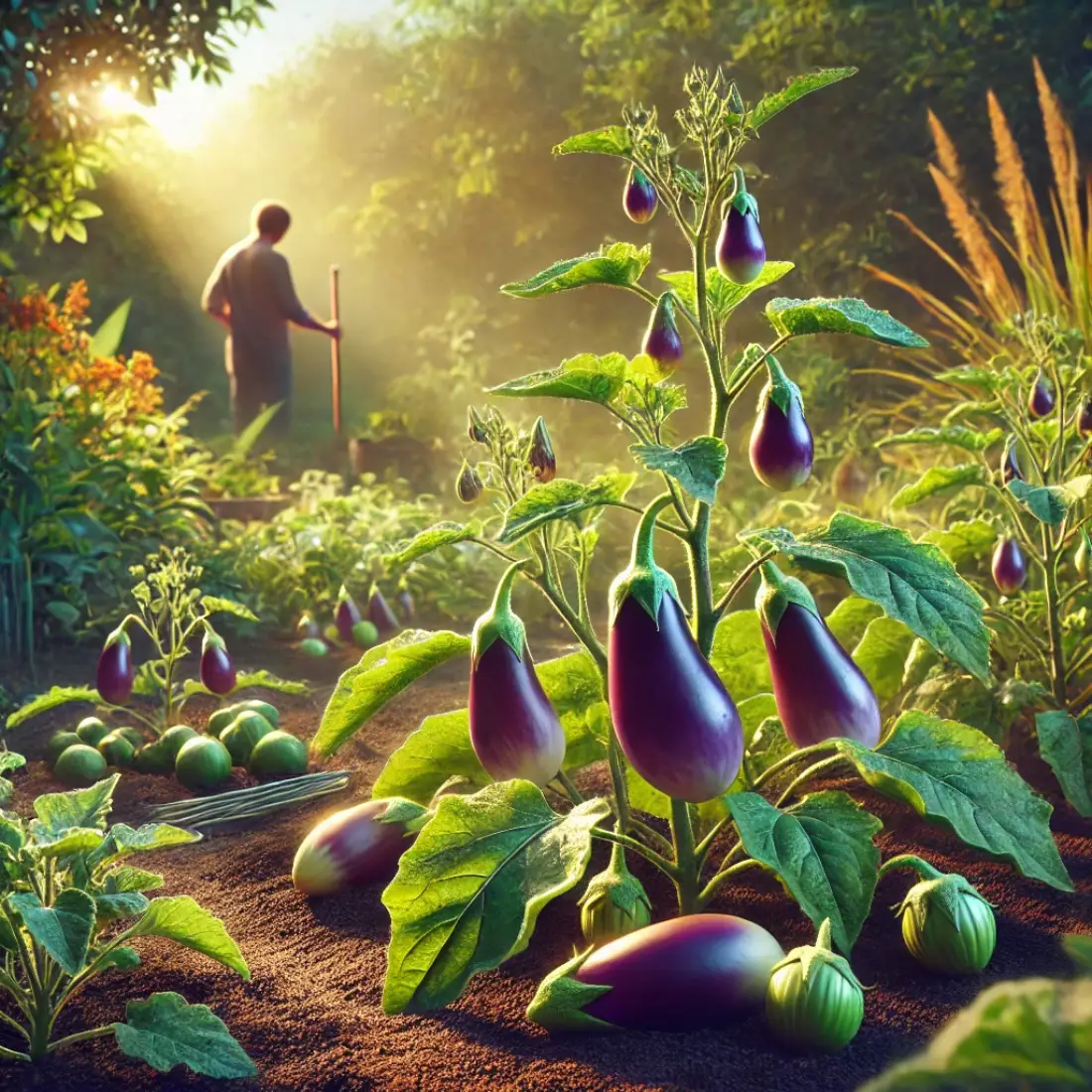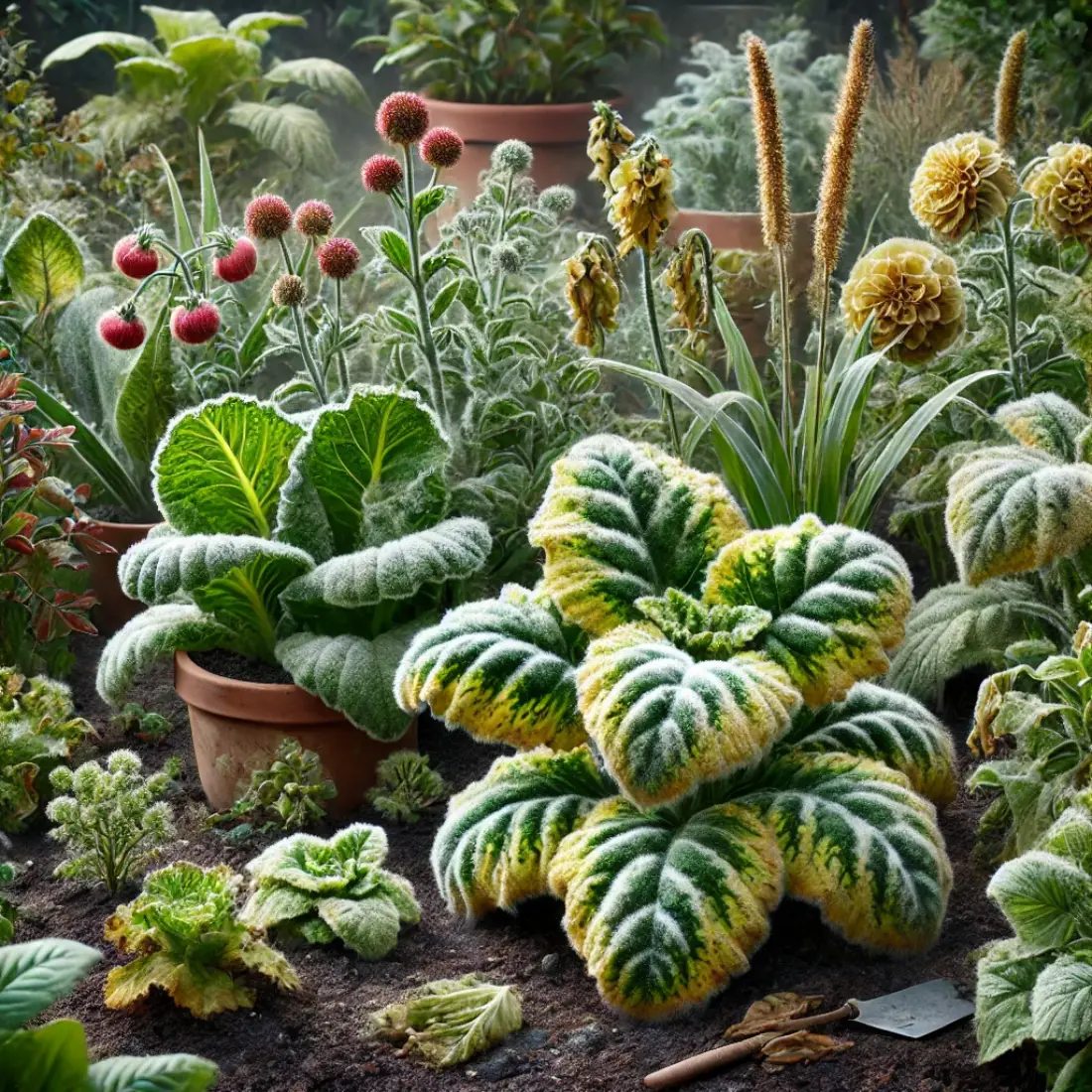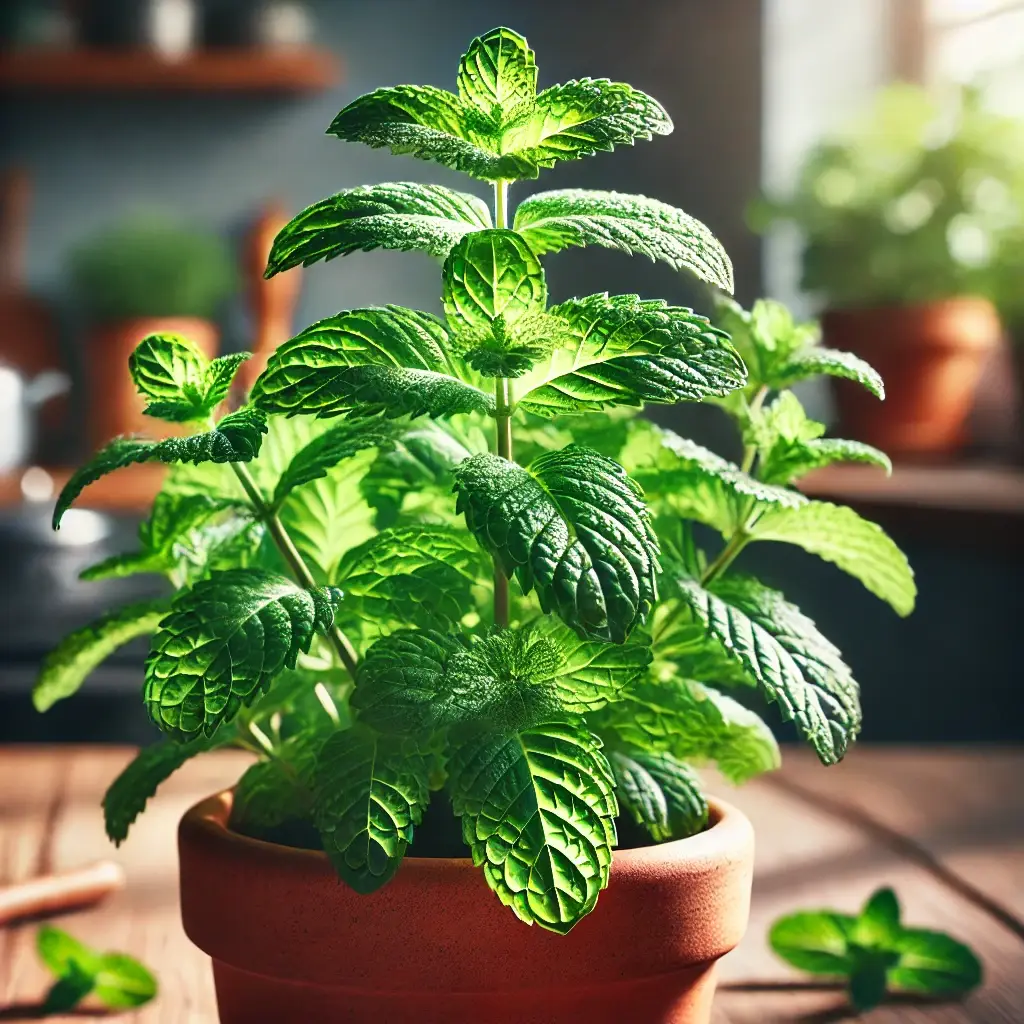Home-grown cabbage is a cut above store-bought varieties, offering unbeatable freshness and flavor. Harvest it at its peak for the best taste and nutritional value. Packed with vitamins C and K, fiber, and antioxidants, this superfood boosts your health without the nutrient loss that comes from prolonged storage.
Plus, when you grow your own, you have total control over pesticides and fertilizers. Opt for organic methods to enjoy cabbage that’s free from harmful chemicals.
- Variety Selection: Choose cabbage varieties suited to your climate.
- Soil Preparation: Use well-drained, fertile soil with a pH of 6.0-6.8.
- Planting Tips: Plant seeds or transplants with proper spacing.
- Watering and Fertilizing: Keep soil consistently moist and use balanced fertilizers.
- Pest and Disease Management: Watch for pests and diseases, and treat them promptly.
- Maintenance: Mulch to retain moisture and control weeds.
- Harvesting: Harvest when heads are firm and full-sized.
- Companion Planting: Grow cabbage with compatible plants.
Choosing the Right Cabbage Variety
Selecting the right cabbage variety is crucial for a successful harvest. Cabbage comes in several types, including green, red, and Savoy, each with unique characteristics and growth requirements.
Green Cabbage: This is the most common type, known for its smooth, tightly packed leaves and mild flavor. Popular varieties include ‘Golden Acre’ and ‘Copenhagen Market.’
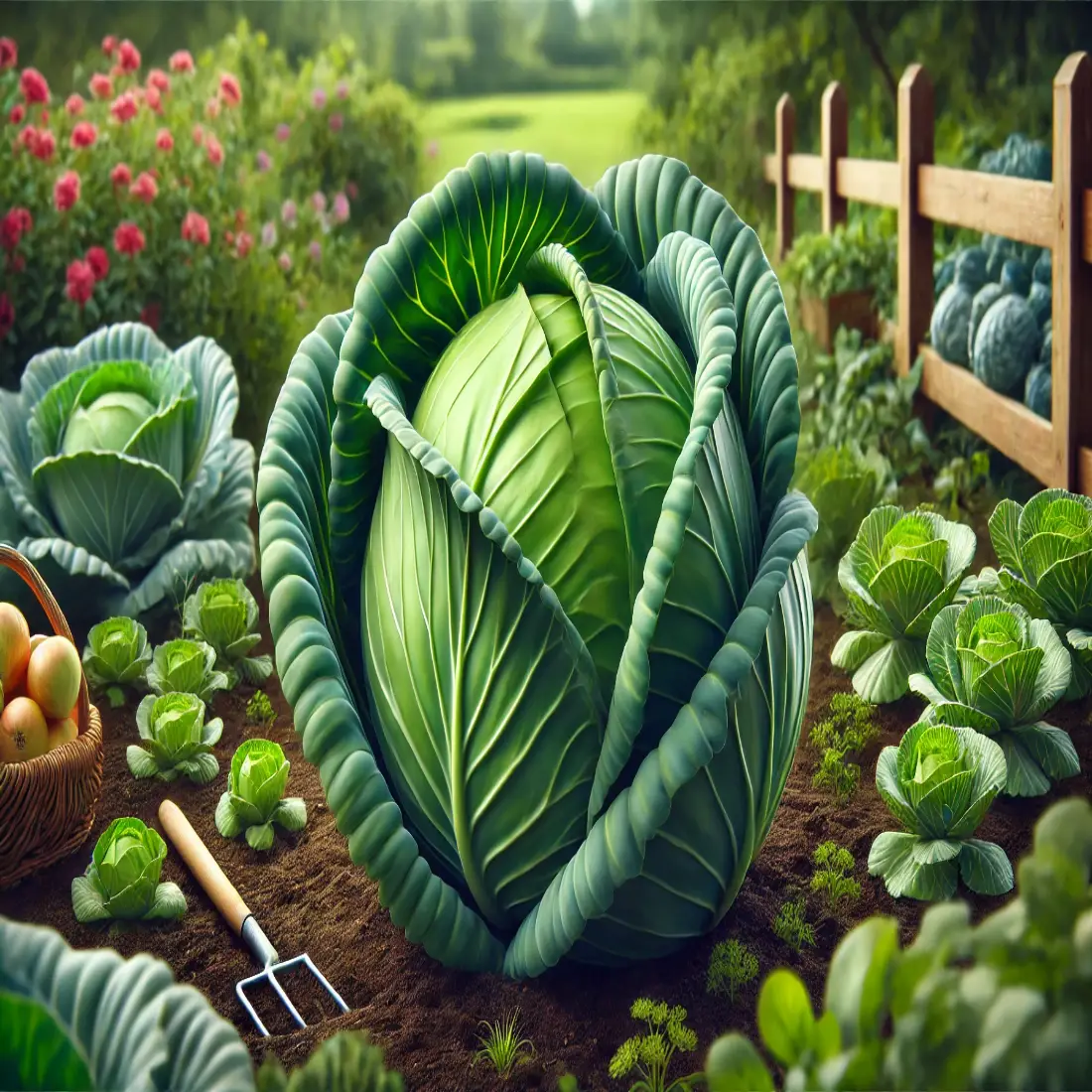
Red Cabbage: Recognized for its vibrant purple-red leaves, red cabbage is slightly peppery in flavor and retains its color when cooked. Varieties like ‘Red Acre’ and ‘Ruby Ball’ are excellent choices.
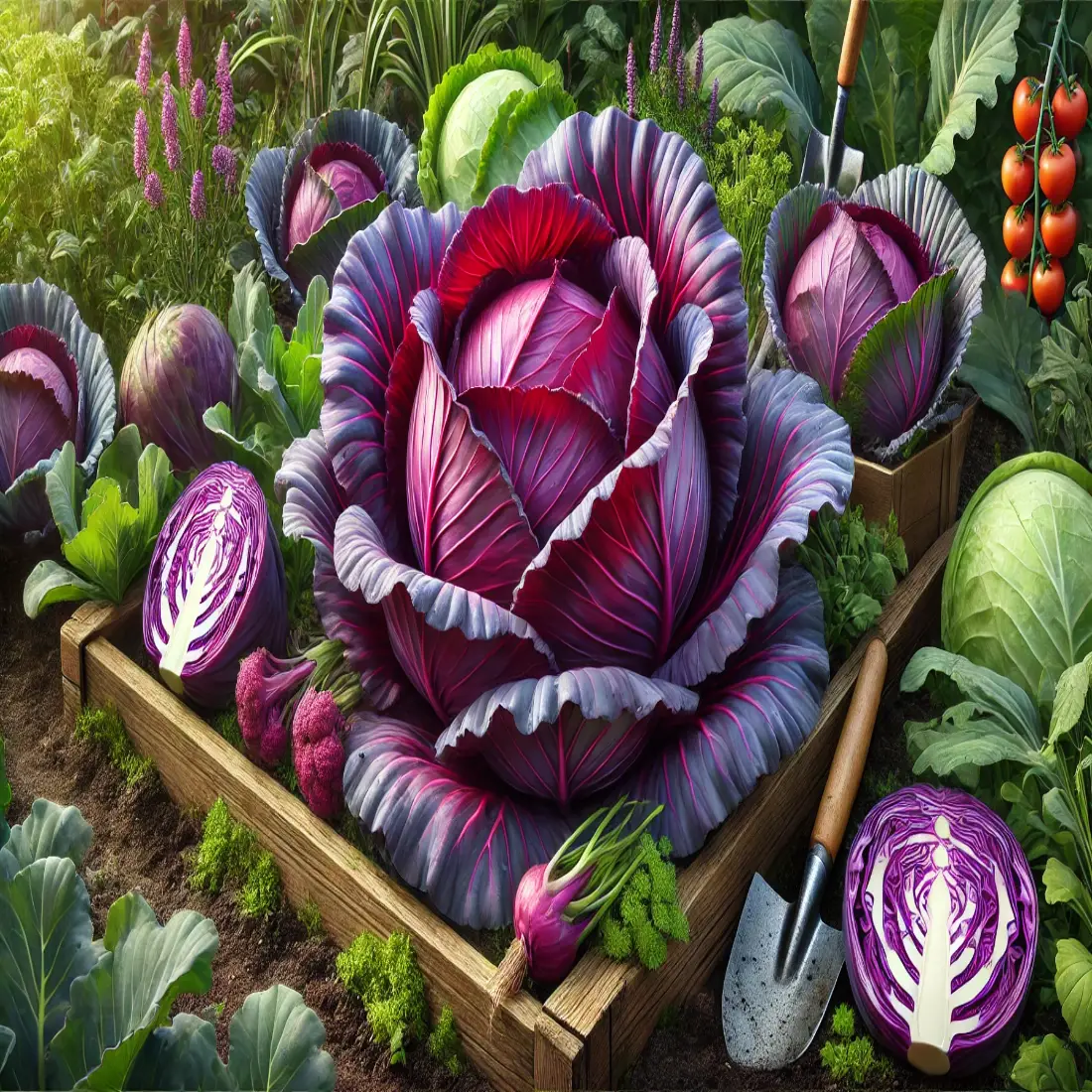
Savoy Cabbage: With crinkled, tender leaves, Savoy cabbage is milder and sweeter than other types. ‘Savoy King’ and ‘Winter King’ are top varieties to consider.
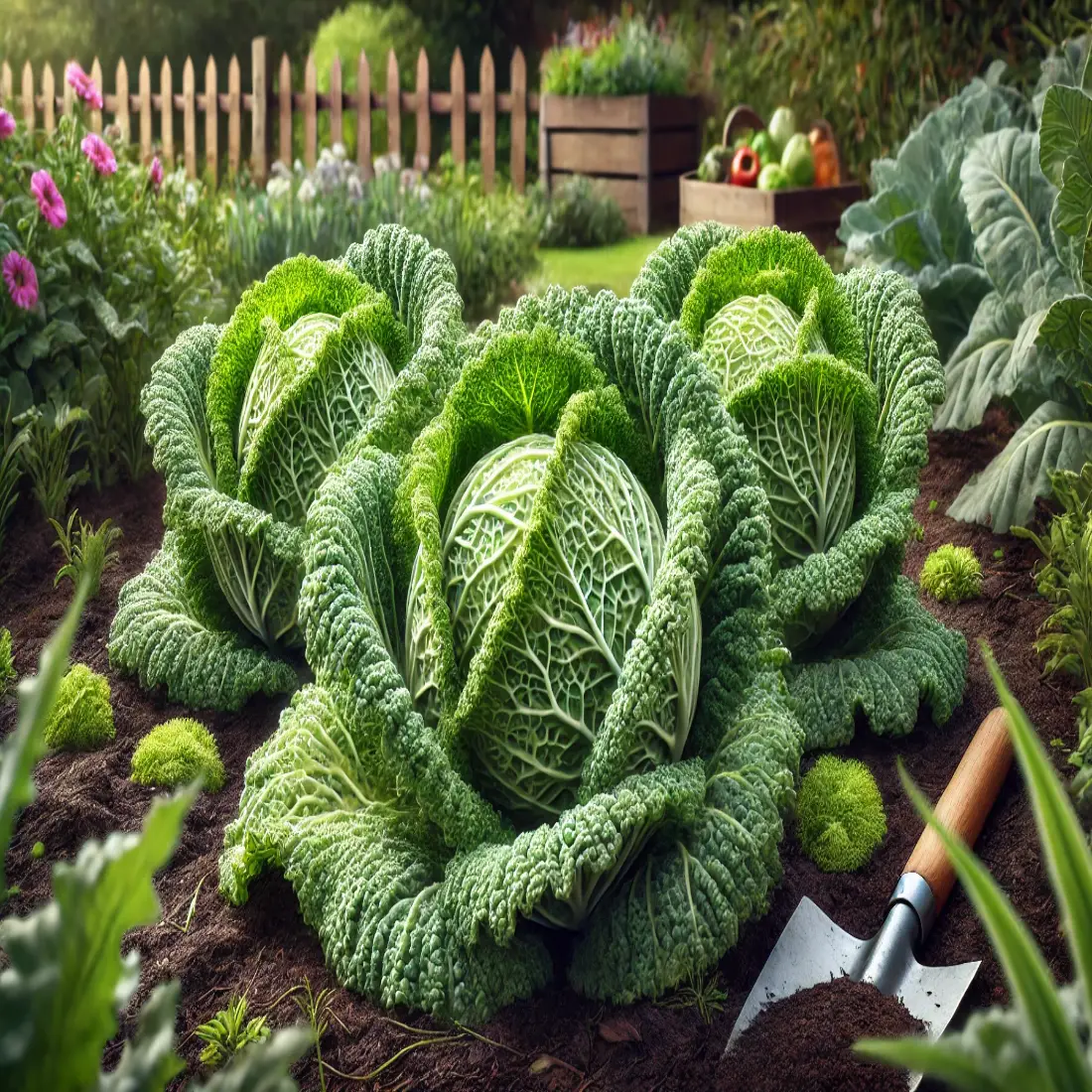
When choosing a variety, consider your climate. Green cabbage generally performs well in cooler climates, while red and Savoy types can tolerate a broader range of conditions. Also, consider the growing season; some varieties mature faster than others. Early-maturing varieties like ‘Gonzales’ can be harvested in as little as 60 days, whereas late-maturing types like ‘Brunswick’ take up to 100 days.
Soil Preparation for Cabbage
Proper soil preparation is essential for growing healthy and productive cabbage. Cabbage thrives in well-drained, fertile soil with a pH level between 6.0 and 6.8. Start by testing your soil to determine its pH and nutrient levels. You can use a home testing kit or send a sample to a local extension service.
Adjusting Soil pH: If the pH is too low, add lime to raise it. If it’s too high, sulfur can help lower it. Aim for a slightly acidic to neutral range, which is ideal for cabbage.
Enhancing Soil Fertility: Incorporate plenty of organic matter, such as compost or well-rotted manure, into the soil. This not only improves fertility but also enhances soil structure and drainage. Organic matter helps retain moisture while allowing excess water to drain away, preventing root rot.
Tilling the Soil: Loosen the soil to a depth of at least 12-15 inches to encourage root growth. Remove any rocks, weeds, or debris that could hinder the growth of cabbage roots. Tilling also aerates the soil, which is beneficial for root development.
Adding Nutrients: Before planting, mix in a balanced fertilizer that provides essential nutrients like nitrogen, phosphorus, and potassium. An all-purpose fertilizer, such as 10-10-10, works well. Nitrogen is particularly important for leafy growth, while phosphorus and potassium support overall plant health and development.
Mulching: After planting, apply a layer of mulch around the plants to help retain soil moisture, suppress weeds, and regulate soil temperature. Organic mulches, such as straw or shredded leaves, are excellent choices.
By thoroughly preparing your soil, you’ll create an optimal growing environment for your cabbage, leading to healthier plants and a more abundant harvest.
Planting Cabbage
Successfully planting cabbage involves careful timing, proper spacing, and attention to the specific needs of the variety you’re growing. Follow these steps for optimal results:
Timing: Cabbage is a cool-season crop, thriving in temperatures between 60-70°F (15-21°C). For spring planting, start seeds indoors 6-8 weeks before the last expected frost. Transplant seedlings outdoors 2-3 weeks before the last frost date. For a fall harvest, sow seeds directly in the garden or start seeds indoors in mid-summer.
Starting from Seeds: Begin with high-quality seeds. Sow them in seed trays or pots filled with a seed-starting mix. Plant seeds about 1/4 inch deep. Keep the soil consistently moist and place the trays in a warm, bright location. Seedlings should emerge within 5-10 days. Once they develop two true leaves, thin them to one plant per cell or pot.
Transplanting: Harden off seedlings by gradually exposing them to outdoor conditions over a week. Choose a sunny location with well-prepared soil. Space plants 12-24 inches apart in rows that are 24-36 inches apart, depending on the variety and expected size of the mature heads. Dig holes slightly larger than the root ball of each seedling, and set the plants deep enough to cover the stems up to the first set of leaves.
Direct Sowing: In regions with a long growing season, you can sow seeds directly into the garden. Space seeds 1/2 inch apart in rows. Once seedlings are 2-3 inches tall, thin them to the appropriate spacing.
Planting Depth and Spacing: Proper spacing is crucial to prevent overcrowding, which can lead to poor air circulation and increased disease risk. Ensure each plant has enough room to grow to its full potential.
Watering and Mulching: Water immediately after planting to help settle the soil around the roots. Maintain consistent moisture levels throughout the growing season. Mulch around the plants to retain moisture, suppress weeds, and regulate soil temperature.
Initial Care: Protect young plants from pests with row covers or netting. Monitor for signs of stress or disease and address issues promptly.
Watering and Organic Fertilizing Cabbage
Watering: Consistent watering is crucial for healthy cabbage growth. Cabbage needs about 1-1.5 inches of water per week, either from rainfall or supplemental irrigation. Water deeply and thoroughly, ensuring the soil is moist but not waterlogged.
It’s best to water early in the morning to reduce evaporation and allow the foliage to dry, minimizing the risk of fungal diseases. Use a soaker hose or drip irrigation system to deliver water directly to the soil, avoiding wetting the leaves.
Organic Fertilizing: Organic fertilizers provide essential nutrients while improving soil health. Before planting, amend the soil with well-rotted manure or compost to supply a steady release of nutrients. This organic matter enhances soil structure and fertility, supporting robust cabbage growth.
Initial Feeding: At planting time, mix a balanced organic fertilizer, such as a 5-5-5 blend, into the soil. Alternatively, you can use a fish emulsion or seaweed extract, which are rich in micronutrients and promote healthy root development.
Side-Dressing: As cabbage plants grow, they benefit from additional feeding. About 3-4 weeks after planting, side-dress with compost or a balanced organic fertilizer. Apply the fertilizer around the base of the plants, keeping it away from the stems to prevent burning.
Nutrient Boost: During the growing season, give your cabbage an extra nutrient boost with liquid organic fertilizers. Compost tea, made from soaking compost in water, is an excellent choice. Apply it as a foliar spray or directly to the soil every 2-3 weeks.
Mulching: Mulch around cabbage plants with organic materials like straw or shredded leaves. Mulch helps retain moisture, suppress weeds, and gradually adds nutrients to the soil as it decomposes.
Protecting Cabbage from Pests and Diseases
Pest Management
Cabbage Worms and Loopers
- Handpicking: Regularly inspect plants and manually remove worms. This is effective for small infestations.
- Bacillus thuringiensis (Bt): A natural bacterial insecticide that specifically targets caterpillars without harming beneficial insects. Spray Bt on the leaves, especially the undersides where larvae hide.
- Diatomaceous Earth: Sprinkle this fine powder around the base of plants and on the leaves. It causes dehydration in soft-bodied insects like cabbage worms.
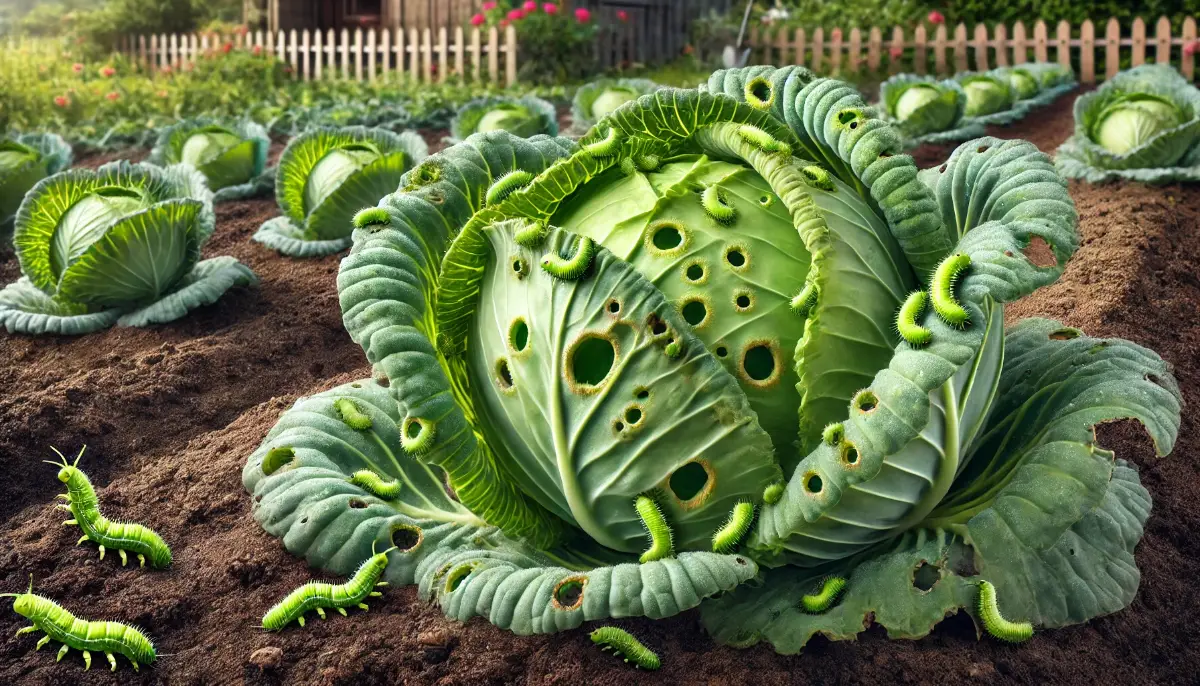
Aphids
- Neem Oil: This natural insecticide disrupts the life cycle of aphids and other pests. Mix with water according to the label instructions and spray directly on affected areas.
- Insecticidal Soap: Made from natural fatty acids, it dehydrates and kills aphids on contact. Spray thoroughly on the foliage, especially on the undersides of leaves.
- Ladybugs: Release ladybugs into your garden as they are natural predators of aphids.
Flea Beetles
- Row Covers: Use lightweight row covers to protect seedlings and young plants from beetles. Ensure the covers are securely fastened to prevent beetles from getting underneath.
- Trap Crops: Plant sacrificial crops like radishes nearby to attract flea beetles away from your cabbage. Once the trap crops are infested, they can be removed and destroyed.
- Wood Ash: Sprinkle wood ash around plants. It acts as a natural repellent and desiccant for flea beetles.
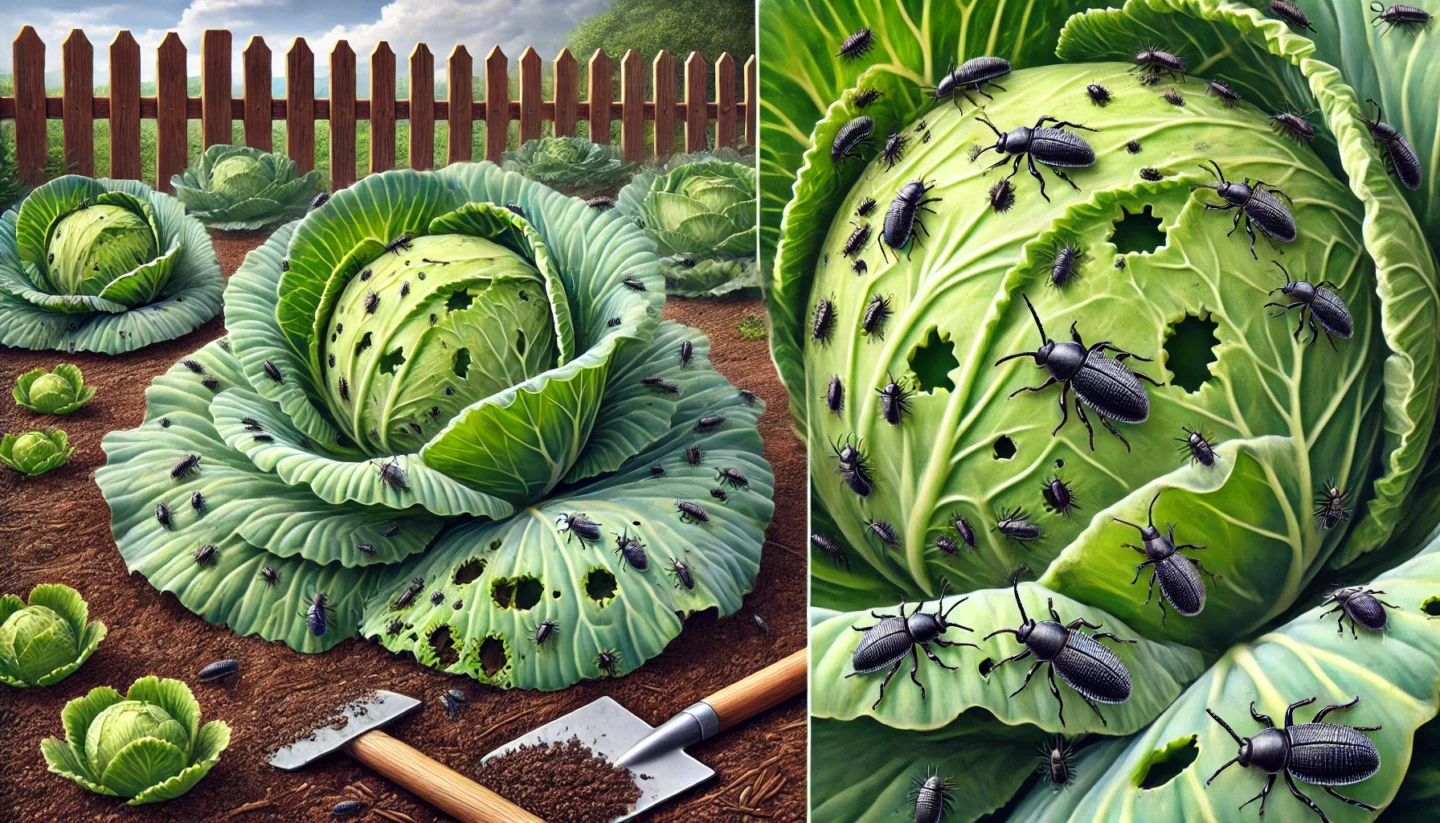
Disease Management
Black Rot
- Crop Rotation: Avoid planting cabbage or other brassicas in the same location for at least three years. This breaks the disease cycle and reduces pathogen build-up in the soil.
- Resistant Varieties: Choose cabbage varieties that are resistant to black rot. Check seed catalogs for information on disease-resistant strains.
- Clean Equipment: Disinfect gardening tools and equipment to prevent the spread of pathogens. Use a solution of one part bleach to nine parts water.
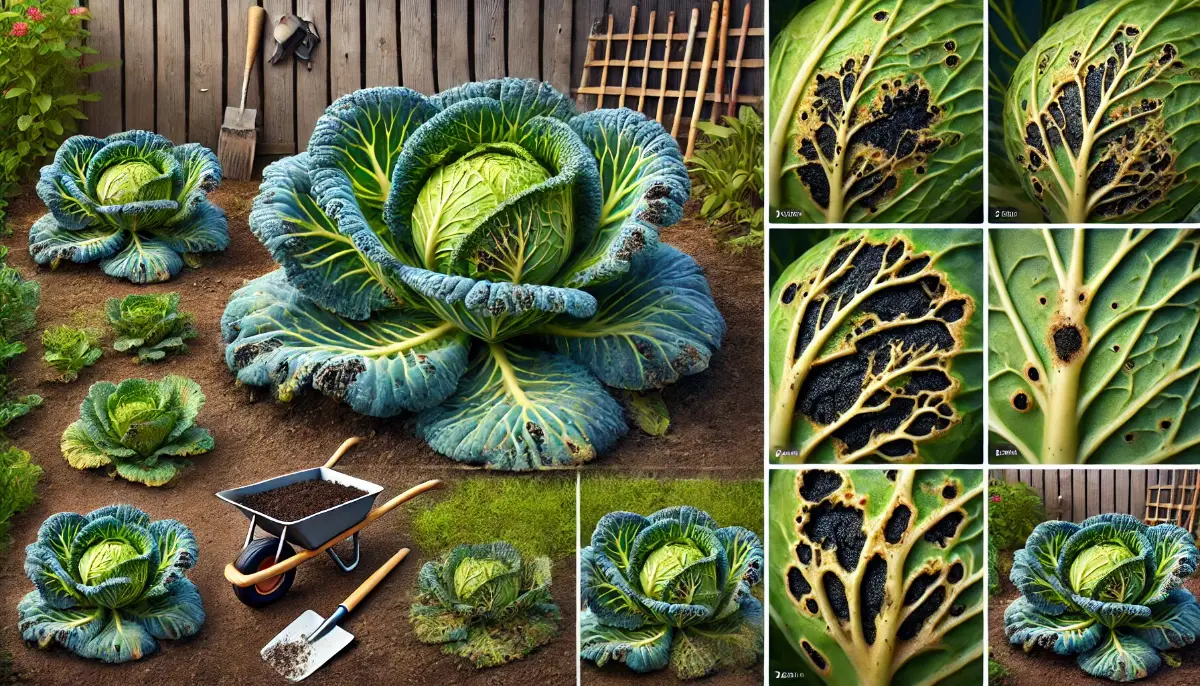
Clubroot
- Soil pH Adjustment: Raise soil pH to 7.2 or higher by adding lime. Clubroot thrives in acidic soils, and increasing the pH can suppress the disease.
- Solarization: Solarize the soil by covering it with clear plastic during the hottest months. The heat kills clubroot spores and other soil-borne pathogens.
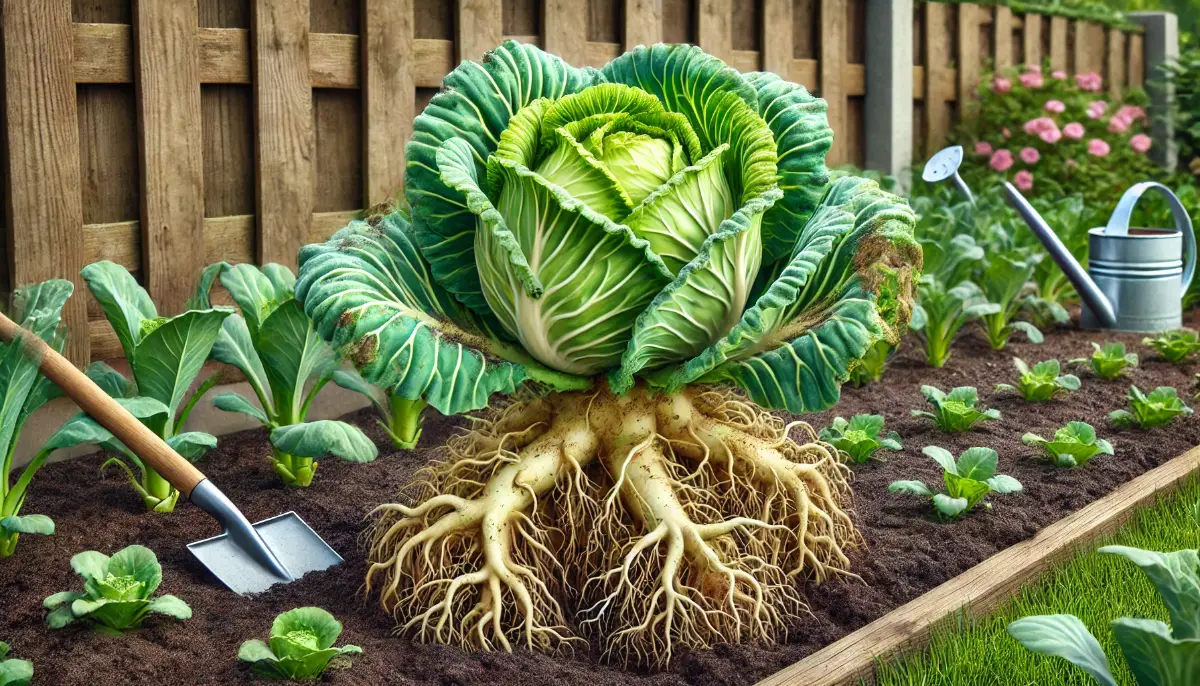
Downy Mildew:
- Proper Spacing: Ensure adequate spacing between plants to improve air circulation and reduce humidity levels around foliage.
- Copper Fungicides: Use copper-based fungicides as a preventive measure. Apply according to label instructions at the first sign of disease.
- Remove Infected Plants: Promptly remove and destroy any plants showing symptoms of downy mildew to prevent the spread of the disease.
Cabbage Growing Troubleshooting
Cabbage, while relatively easy to grow, can sometimes present challenges. Here are some common issues and organic solutions to ensure a healthy and productive cabbage crop:
Yellowing Leaves
- Cause: This can be due to nutrient deficiencies, particularly nitrogen, or overwatering.
- Solution: Apply a balanced organic fertilizer like compost tea or fish emulsion to provide essential nutrients. Ensure proper drainage to avoid waterlogged soil.
Small or Underdeveloped Heads
- Cause: Poor soil fertility, overcrowding, or inconsistent watering can lead to small heads.
- Solution: Enrich the soil with compost or well-rotted manure before planting. Thin out crowded plants to provide adequate space. Maintain consistent soil moisture through regular watering.
Bolting (Premature Flowering)
- Cause: High temperatures or fluctuating weather conditions often cause cabbage to bolt.
- Solution: Plant cabbage at the appropriate time for your climate to avoid extreme heat. Use mulch to regulate soil temperature and moisture.
Wilting Plants
- Cause: Wilting can be due to underwatering, root damage from pests, or diseases like clubroot.
- Solution: Ensure regular watering, especially during dry periods. Check for root pests and apply organic treatments as needed. If clubroot is suspected, adjust soil pH by adding lime to raise it above 7.2.
Cabbage Heads Splitting
- Cause: Splitting occurs when cabbages receive an excess of water after a dry period.
- Solution: Maintain consistent watering to prevent sudden changes in soil moisture. Harvest cabbages as soon as they reach maturity to avoid splitting.
Poor Germination
- Cause: Low soil temperatures or poor seed quality can result in poor germination.
- Solution: Start seeds indoors in a controlled environment to ensure optimal conditions. Use fresh, high-quality seeds from a reputable source.
Stunted Growth
- Cause: Nutrient-poor soil, pest damage, or root-bound plants can stunt growth.
- Solution: Improve soil fertility with organic compost or a balanced fertilizer. Check for and manage pests. Transplant seedlings carefully to avoid root damage.
Harvesting Cabbage
Recognizing When to Harvest: Harvest cabbage when the heads are firm and full-sized, typically 70-120 days after planting, depending on the variety. A mature head should feel solid when gently squeezed.
Timing: Harvest in the morning when the temperatures are cooler to prevent wilting. Avoid harvesting during the hottest part of the day.
Tools Needed: Use a sharp knife or garden shears to cut the cabbage heads. This ensures a clean cut and minimizes damage to the plant.
Technique:
- Cut the head at the base, leaving the outer leaves and a short stem attached.
- Handle the heads gently to avoid bruising.
Post-Harvest Care:
- Remove any damaged or loose outer leaves.
- If you plan to store the cabbage, avoid washing it until you’re ready to use it to prevent excess moisture from promoting rot.
Companion Planting with Cabbage
Companion planting is a strategic gardening practice where certain plants are grown together to enhance growth, deter pests, and improve flavor. For cabbage, effective companion planting can lead to healthier plants and a more productive garden.
Best Companion Plants for Cabbage
Aromatic Herbs: Plants like rosemary, sage, and thyme repel cabbage moths and other pests. Their strong scents confuse and deter harmful insects.
Onions and Garlic: These alliums emit a smell that deters cabbage worms, aphids, and other common pests. Planting them around your cabbage creates a natural pest barrier.
Marigolds: These bright flowers attract beneficial insects like ladybugs, which prey on aphids and other pests. Marigolds also have nematocidal properties, helping to keep soil healthy.
Beets and Radishes: These root vegetables do not compete with cabbage for above-ground space and can help break up the soil, improving aeration and drainage for cabbage roots.
Nasturtiums: These flowering plants act as a trap crop, luring aphids and cabbage worms away from your cabbage. Nasturtiums also attract pollinators, boosting overall garden health.
Plants to Avoid Planting Near Cabbage
Strawberries: These plants compete with cabbage for nutrients and water, potentially leading to poor growth in both crops.
Tomatoes and Peppers: These nightshades can be susceptible to similar pests and diseases as cabbage, leading to increased risk of infestations and infections.
Pole Beans: Beans can interfere with cabbage’s growth and hinder its development due to their different nutrient requirements and growth habits.
Tips for Successful Companion Planting:
- Proper Spacing: Ensure adequate spacing between companion plants to avoid competition for resources.
- Diverse Planting: Include a variety of companion plants to maximize the benefits and create a balanced ecosystem in your garden.
- Continuous Monitoring: Regularly check your garden for any signs of pest infestations or plant stress and address issues promptly.
FAQs About Growing and Caring for Cabbage
How long does it take to grow cabbage from seed to harvest?
Growing cabbage from seed to harvest typically takes 70-120 days, depending on the variety. Early varieties can be ready in about 70 days, while larger, late-maturing varieties can take up to 120 days.
Can I grow cabbage in containers?
Yes, cabbage can be grown in containers. Choose a container at least 12-16 inches deep and wide to accommodate the roots. Use high-quality potting soil and ensure proper drainage.
How do I prevent my cabbage from bolting?
To prevent bolting, avoid planting cabbage too early in the spring or late in the fall when temperatures are extreme. Keep the soil consistently moist and mulch to regulate temperature.
What are the signs that cabbage is ready to harvest?
Cabbage is ready to harvest when the heads are firm and full-sized. For most varieties, this means the head feels solid when gently squeezed. Harvest promptly to prevent splitting.
How often should I water my cabbage plants?
Cabbage requires consistent moisture, so water deeply once or twice a week, ensuring the soil is kept moist but not waterlogged. Adjust watering frequency based on weather conditions.
What organic methods can I use to control cabbage pests?
Use neem oil, insecticidal soap, or diatomaceous earth to control pests like cabbage worms and aphids. Introducing beneficial insects like ladybugs can also help manage pest populations.
Can I grow cabbage in the shade?
Cabbage prefers full sun but can tolerate partial shade. Aim for at least 6 hours of direct sunlight daily for optimal growth. Less sunlight may result in smaller heads and slower growth.
What soil pH is ideal for growing cabbage?
The ideal soil pH for growing cabbage is between 6.0 and 6.8. Testing your soil and amending it as needed to reach this pH range will promote healthy growth and nutrient uptake.
How can I improve soil fertility for growing cabbage?
Incorporate compost, well-rotted manure, or organic fertilizers into the soil before planting. Side-dress with additional compost or organic fertilizers during the growing season to maintain soil fertility.
What should I do if my cabbage heads start splitting?
To prevent splitting, maintain consistent soil moisture levels. Harvest cabbage heads as soon as they reach maturity, especially after heavy rains or a period of drought followed by rain.

